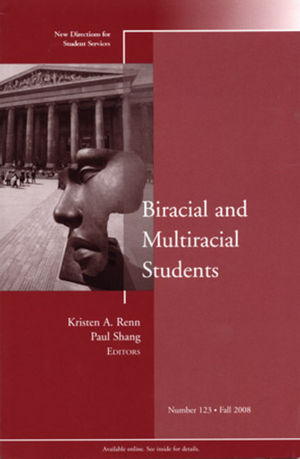Global Mixed RacePosted in Africa, Anthologies, Anthropology, Asian Diaspora, Books, Canada, Caribbean/Latin America, Census/Demographics, Europe, Media Archive, Social Science, United Kingdom, United States on 2014-08-18 02:29Z by Steven |
New York University Press
March 2014
357 pages
Cloth ISBN: 9780814770733
Paper ISBN: 9780814789155
Edited by:
Rebecca Chiyoko King-O’Riain, Senior Lecturer
National University of Ireland, Maynooth
Stephen Small, Associate Professor of African American Studies
University of California, Berkeley
Minelle Mahtani, Associate Professor in the Department of Human Geography and the Program in Journalism
University of Toronto, Scarborough
Miri Song, Professor of Sociology
University of Kent
Paul Spickard, Professor of History and Affiliate Professor of Black Studies, Asian American Studies, East Asian Studies, Religious Studies, and the Center for Middle Eastern Studies
University of California, Santa Barbara
Patterns of migration and the forces of globalization have brought the issues of mixed race to the public in far more visible, far more dramatic ways than ever before. Global Mixed Race examines the contemporary experiences of people of mixed descent in nations around the world, moving beyond US borders to explore the dynamics of racial mixing and multiple descent in Zambia, Trinidad and Tobago, Mexico, Brazil, Kazakhstan, Germany, the United Kingdom, Canada, Okinawa, Australia, and New Zealand. In particular, the volume’s editors ask: how have new global flows of ideas, goods, and people affected the lives and social placements of people of mixed descent? Thirteen original chapters address the ways mixed-race individuals defy, bolster, speak, and live racial categorization, paying attention to the ways that these experiences help us think through how we see and engage with social differences. The contributors also highlight how mixed-race people can sometimes be used as emblems of multiculturalism, and how these identities are commodified within global capitalism while still considered by some as not pure or inauthentic. A strikingly original study, Global Mixed Race carefully and comprehensively considers the many different meanings of racial mixedness.
Contents
- Global Mixed Race: An Introduction / Stephen Small and Rebecca C. King-O’Riain
- Part I: Societies with Established Populations of Mixed Descent
- 1. Multiraciality and Census Classification in Global Perspective / Ann Morning
- 2. “Rider of Two Horses”: Eurafricans in Zambia / Juliette Bridgette Milner-Thornton
- 3. “Split Me in Two”: Gender, Identity, and “Race Mixing” in the Trinidad and Tobago Nation / Rhoda Reddock
- 4. In the Laboratory of Peoples’ Friendship: Mixed People in Kazakhstan from the Soviet Era to the Present / Saule K. Ualiyeva and Adrienne L. Edgar
- 5. Competing Narratives: Race and Multiraciality in the Brazilian Racial Order / G. Reginald Daniel and Andrew Michael Lee
- 6. Antipodean Mixed Race: Australia and New Zealand / Farida Fozdar and Maureen Perkins
- 7. Negotiating Identity Narratives among Mexico’s Cosmic Race / Christina A. Sue
- Part II: Places with Newer Populations of Mixed Descent
- 8. Multiraciality and Migration: Mixed-Race American Okinawans, 1945–1972 / Lily Anne Yumi Welty
- 9. The Curious Career of the One-Drop Rule: Multiraciality and Membership in Germany Today / Miriam Nandi and Paul Spickard
- 10. Capturing “Mixed Race” in the Decennial UK Censuses: Are Current Approaches Sustainable in the Age of Globalization and Superdiversity? / Peter J. Aspinall and Miri Song
- 11. Exporting the Mixed-Race Nation: Mixed-Race Identities in the Canadian Context / Minelle Mahtani, Dani Kwan-Lafond, and Leanne Taylor
- Global Mixed Race: A Conclusion / Rebecca C. King-O’Riain
- Bibliography
- About the Contributors
- Index

